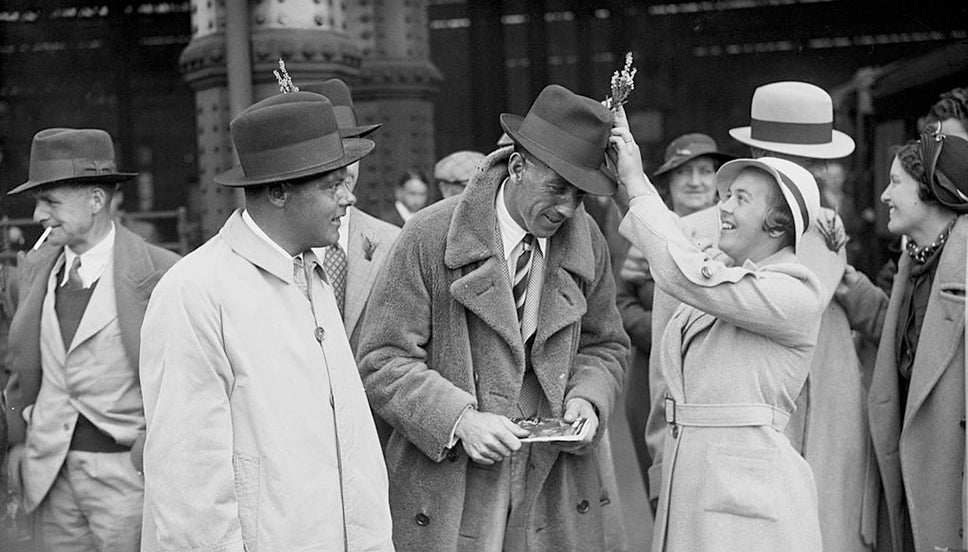That was how Vardon viewed the action of Alf Padgham, whose short, three-quarter backswing allowed the club to flow effortlessly into the ball while also creating huge power.
It was this swing that helped Padgham - one of the longest hitters of his day - conquer the longest course yet used for The Open as he triumphed at Royal Liverpool in 1936.
Born in Surrey, Padgham's family had close ties to Royal Ashdown Forest in Sussex, where he served his apprenticeship before becoming the professional at Sundridge Park.
He made his Open debut at Royal Liverpool in 1930 and slowly climbed his way up the leaderboard over the next five years before becoming Champion Golfer.
Padgham was fourth in 1932, seventh the following year, then third behind Henry Cotton at Sandwich and second to Alf Perry at Muirfield as he closed in on the Claret Jug.
And with Hoylake extended to 7,078 yards, the stage was set for him to finally get over the line at Royal Liverpool - although it proved to be much more eventful than first anticipated.
Heavy rain caused the first day of qualifying to be abandoned as what The Glasgow Herald described as "one of the worst storms ever experienced in an Open" broke over the Wirral Peninsula.
All the scores were voided, including Henry Cotton's completed round of 67, with the players returning for the qualifying rounds on Tuesday and Wednesday instead.
The first round finally got underway on the Thursday and England's Bill Cox took the early lead with a four-under 70, with Scotland's Jimmy Adams one shot back in second.
Meanwhile, Padgham finished his opening 18 holes tied with a group of players - including Gene Sarazen, Charles Whitcombe and Cotton - on one-under after shooting 73.
He went one better in his second round, shooting a two-under 72 to trail Adams and Cox by one shot along with four other players going into Saturday's 36-hole finale.
Incredibly, Padgham started the final day by breaking into the locked Hoylake pro shop to retrieve his clubs for an early tee time - not that it had an impact on his form on the course.
A third round of 71 maintained his steady progression across the Championship, leaving him six-under for the tournament and one shot behind leaders Adams and Cotton.
In the fourth round that afternoon, Padgham went out in 37 and Adams followed him with 38, meaning the two players were now level going into the final nine holes.
Padgham finished with a flourish, making a four at the 17th and a three at the 18th thanks to a brilliant putt from 12 feet to post a total of 287 for Adams to try and beat.
Standing on the 17th tee, the Scot knew he had to play the final two holes in eight strokes to tie with the clubhouse leader but his approach shot to the penultimate hole found the bunker.
He escaped from the sand trap but missed the subsequent putt and went down the last hole needing to make a three to force a play-off with Padgham.
Having found the green in two, Adams struck his putt from 12 yards and watched as it raced to the hole and tantalisingly circled the rim before popping back out.
His closing 73 could not deny Padgham his first and only Major title, the Englishman winning the Claret Jug by one shot as Cotton finished in a tie for third with France's Marcel Dallemagne.
